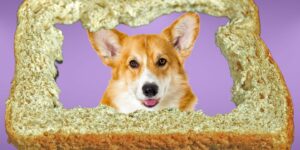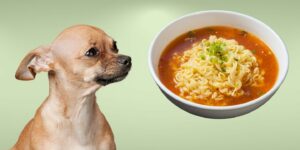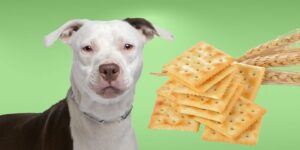The short answer is yes, dogs can eat pasta in moderation as part of a balanced diet. However, it is important to consider the type and amount of pasta you feed your dog, as well as any potential health concerns. In this article, we will discuss the benefits of pasta for dogs, the types of pasta that are safe for them to consume, appropriate portion sizes, and potential health concerns.
Benefits of Pasta for Dogs
Carbohydrate Source
Pasta is a good source of carbohydrates, which can provide your dog with energy and help to support a healthy digestive system. Pasta can be used alone or combined with meat and served as a complete and balanced meal.
Digestive Health Support
The fiber in whole wheat pasta and other healthier pasta options can improve your dog's digestive health by promoting regular bowel movements and preventing constipation.
Types of Pasta Dogs Can Eat
When it comes to feeding your dog pasta, it is important to choose the right type.
Whole Wheat Pasta
Plain, cooked pasta made from whole wheat is a good option because it is higher in fiber and nutrients compared to refined wheat pasta.
Grain-Free Pasta Options
If your dog has a grain sensitivity or you simply want to explore other options, there are several grain-free pasta varieties available. These include:
Rice Pasta
Made from rice flour, this pasta is a great gluten-free and grain-free option.
Corn Pasta
Corn pasta is another gluten-free option that provides a similar texture to wheat-based pasta.
Chickpea Pasta
This type of pasta is made from chickpea flour and offers a higher protein content compared to other pasta varieties.
Pasta to Avoid
Avoid feeding your dog pasta that contains sauces, seasonings, or other ingredients that could be harmful to your dog, such as garlic, onions, and high levels of salt.
Portion Size
When feeding your dog pasta, it is important to consider portion size. As with any type of food, it is best to feed your dog pasta in moderation.
Determining Caloric Needs
A general rule of thumb is to feed your dog no more than 10% of its daily caloric intake in the form of pasta.
Calculating Pasta Portions
This means that if your dog requires 500 calories per day, you should feed them no more than 50 calories of pasta.
Frequency of Feeding
Pasta should be fed as an occasional treat or meal component, rather than a daily staple in your dog's diet.
Possible Health Concerns
While pasta can be a healthy addition to your dog's diet in moderation, there are some potential health concerns to be aware of.
Grain Sensitivities and Allergies
For example, some dogs are sensitive to certain grains, such as wheat, which is commonly used in pasta.
Symptoms of Grain Sensitivity
Symptoms of grain sensitivity in dogs can include itching, skin irritation, and gastrointestinal issues, such as diarrhea and vomiting.
Alternative Sources of Carbohydrates
If your dog shows signs of a grain sensitivity, consider feeding them grain-free pasta options or other carbohydrate sources, such as sweet potatoes or peas.
Weight Gain and Obesity
In addition, feeding your dog large amounts of pasta on a regular basis could lead to weight gain.
Risks Associated with Obesity in Dogs
Obesity in dogs can increase the risk of health issues, such as diabetes and heart disease.
Maintaining a Healthy Weight
To maintain a healthy weight, ensure that your dog's caloric intake from all food sources, including pasta, is balanced with their energy expenditure through exercise and play.
Serving Suggestions
Combining Pasta with Protein Sources
To create a balanced meal, consider combining cooked pasta with a protein source, such as lean meat, chicken, or fish.
Adding Vegetables for a Balanced Meal
Incorporate vegetables, such as steamed or boiled carrots, peas, or green beans, to provide additional nutrients and fiber.
Rotating Pasta with Other Carbohydrate Sources
Periodically switch up the type of carbohydrate source you provide your dog to ensure they receive a variety of nutrients and prevent dietary boredom.
Conclusion
In conclusion, dogs can eat pasta as part of a balanced diet. However, it is important to choose the right type of pasta and to feed it to your dog in moderation. By following these guidelines, you can help to ensure that your dog enjoys the health benefits of pasta without any negative side effects.











